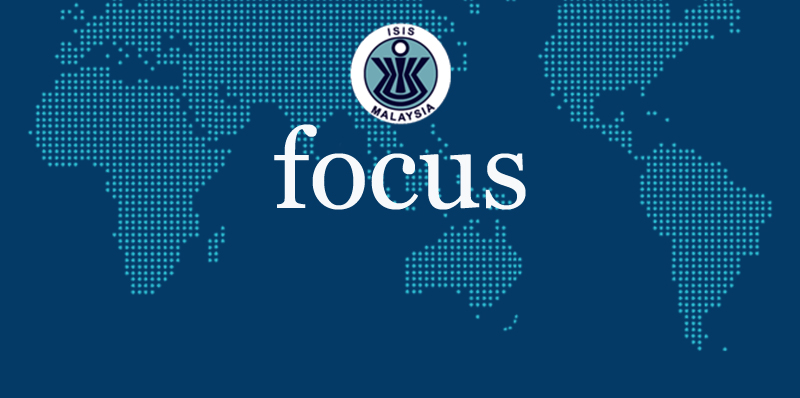Like many countries around the world, Laos is grappling with the impact of this global pandemic. While an effective government response seems to have mitigated the worst of its public health consequences, significant socio-economic challenges remain in the long-run.
BY EKTO VONGPHAKDY
Since the outbreak of the disease in January 2020, COVID-19 has become the world’s most pressing non-traditional security threat. The World Health Organization (WHO) has officially classified COVID-19 a global pandemic in the middle of March 2020 as the number of infections and deaths spiraled. By the end of April 2020, reports put infections at over 3,000,000 cases, with 200,000 deaths and close to a million recoveries.
Disrupted economic activities mean that global trade is expected to fall between 13 percent and 32 percent this year. Conversely, reports have also indicated that environmental readings have improved across the world due to less pollution generated by economic activities and transportation vehicles.
Despite its lockdown and travel restrictions, Laos has not been spared from the effects of this pandemic. Its first case was detected on 23 March 2020 and the total number of infections have steadily increased to 19 as of 13 April 2020. Besides monitoring and managing the healthcare aspect of this pandemic, the Lao Government has had to give special attention to mitigate the economic effects on the livelihoods of its citizens and the wider economy.
The government has established the National Taskforce Committee for COVID-19 Prevention and Control to address the spread and impacts of COVID-19. Its missions are to serve as a focal point in managing the healthcare aspects of the pandemic, including the daily press conferences and updates. In addition, it studies the impact of the COVID-19 outbreak on socio-economic development and works to address its resulting challenges. Moreover, Prime Minister Dr Thongloun Sisoulith has issued additional notifications, such as Order No. 06/PM on 29 March 2020, which details containment and prevention measures as well as the framework for a whole-of-government response to the COVID-19 pandemic. A consequence of this was the lockdown of the country for almost two months.
The government and the people have worked hand-in-hand in the struggle against COVID-19. The measures in place have resulted in both positive and negative impacts. On the positive side, the capacity of the Lao Government for decisive leadership, supplemented by the contribution of all relevant local stakeholders in managing the pandemic, has been noteworthy. There has also been cooperation with regional and international partners, like ASEAN, the WHO and the United Nations.
The lockdown has revealed that social order has prevailed in Laos. By following instructions to stay and work from home where possible, the risk of infections has been demonstrably minimised – resulting in a manageable rate of infections. Family members have more time for each other and people are increasingly self-sufficient. In addition, the slowing down of human activities and traffic across the land and on rivers have seen a positive impact on the environment. Incidentally, less traffic has also meant less vehicle accidents across the country.
Nevertheless, there are also challenges that need to be addressed. The disruption caused by the lockdown to businesses and economic activity in both the public and private sectors has been severe. The National Economic Research Institute estimates that the GDP growth of Laos will decline from 6.1 percent in 2019 to 3.3 percent in 2020. Meanwhile, an estimation by the Asian Development Bank predicts the country’s growth to be around 3.5 percent for the same year.
Education is another sector that has been severely disrupted. All schools have been closed and Laos lacks the technical capacity and resources to implement an effective e-learning system throughout the country. Parents have now found themselves playing the role of teachers and trainers. The spread of COVID-19 has also restricted the celebration of several traditional Lao festivals and national events, such as the Lao New Year festival, wedding parties and sports competitions.
The National Taskforce Committee for COVID-19 Prevention and Control is planning to ease restrictions once it has ascertained that the local spread of COVID-19 is under control. Nevertheless, two phases will be decided. Phase One will see domestic traveling and most normal activities allowed, but closely monitored and evaluated for 30 days. If infection cases subside during Phase One, then Phase Two will kick in – all activities will be able to resume fully. The only exemption remains for travelers into Laos who must stay at self-quarantine centres provided by the government for at least 14 days.
Authorities will continue to remind people that even when the lockdown restrictions are eased, they will always have to be mindful of good hygiene and other preventive measures until a vaccine is discovered. The risk of further outbreaks is highly plausible. Hopefully, the lessons learnt from this pandemic will be remembered and applied for future pandemics as well as other unexpected, major disruptions.
Ekto Vongphakdy is Research Fellow in the Strategic and International Studies Division, Institute of Foreign Affairs, Laos





